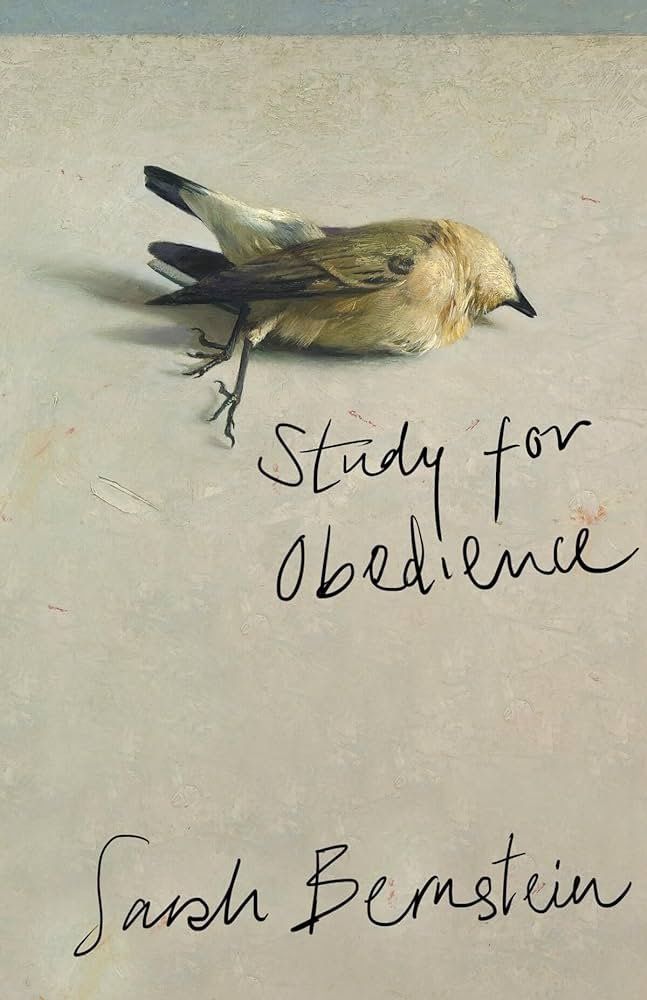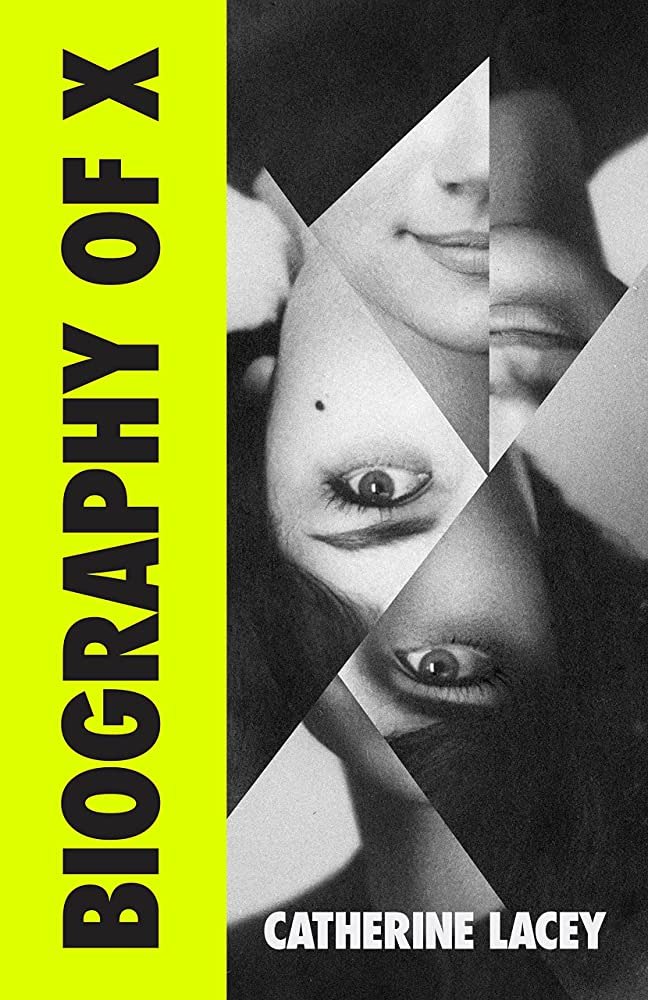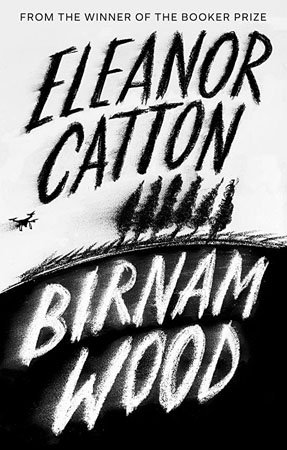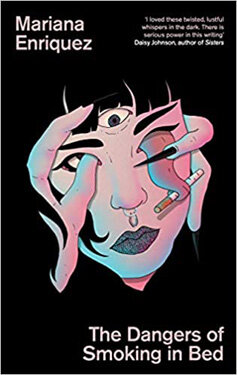“Under the Eye of the Big Bird” is definitely not a traditional sort of novel but more like islands of events separated by space and time. Hundreds (or even thousands) of years sometimes pass between sections. The chapters aren't chronological either. These could be taking place far in the distant future or perhaps the past. Certain characters seem to overlap between sections, but often these turn out to be distant relations or clones of their predecessors who use the same name. Some advanced technological progress has been made (being able to sync consciousness with others, hovercrafts) but other technologies like flying airplanes has been lost and then later hovercrafts become outmoded. There are references to calamitous events which nearly wipe out the world's human population or periods of environmental instability, but the focus is on the experience of various individuals caught in the circumstances of their particular time and community. Some of their lives more closely resemble our own, but others have been genetically modified or evolved to have different physiological traits (extra eyes, the ability for photosynthesis, etc), extra-sensory powers or artificial intelligence. Lifespans drastically differ from story to story so that some individuals only live for a few decades while others live for hundreds of years. Rather than following any individual's story across the narrative, this book is more concerned with the destiny or a possible eventual extinction or rebirth of the human race. In its quest to survive and adapt throughout the ages questions are raised concerning identity, community, intelligence, creativity, motherhood, romance and religion.
While reading this book I felt like the ground was constantly shifting under my feet as whenever I thought I could almost grasp a timeline or character's trajectory things would change. At first I tried to map out what was happening but this soon proved to be too difficult and I decided instead to let the story wash over me instead of trying to follow it like a traditional narrative. I was glad I did this because it meant I was able to ease into and enjoy where the novel took me even though I felt very disorientated. The story also (somewhat) comes together in the final two chapters where previous events are somewhat over-explained. Now that I know the meaning of many of this story's puzzle pieces I think if I went back and reread it I'd see more clearly how they all fit together. I'd be eager to do so at some point because I think this book is quite a creative imaginative feat and I'm fascinated how it challenges many of our assumptions about free will and predestination based on genetics, social engineering or technology. Later on in the novel it's observed “While you may believe that you have freely adopted your values out of the entire field of possibilities, that is hardly the case. From the beginning, your limited value systems are built up only in a single, predetermined direction.”
A curious small detail which is mentioned a couple times in the early sections of the novel is a carousel. This image haunted me while reading the book because a carousel feels very reminiscent of childhood and this novel often focuses on young people trying to orientate themselves and develop in a world which is often strangely different from what we know. Like a revolving carousel when it stops the era where these individuals end up is subject to chance. And the carousel spinning around also comes to feel like civilisation itself going through the same cycles across thousands of years. Being spun around is also very disorientating – much like the experience of reading this book! Perhaps I'm reading too much into it but this came across as quite a symbolic image which stuck with me throughout the novel.
I enjoyed how a collective who jointly raise the children in many of the communities within the stories are merely referred to as “the mothers”. This feels quite mysterious at first but it's eventualyl explained. Except for the few great mothers “the mothers” are only referred to as a collective. This made me think of “Embers of the Hands”, the non-fiction book on Vikings I read recently. The author Eleanor Barraclough remarks how almost all the historical Viking personalities we know about are male warriors and male leaders because that's what is recorded in legends and history. However, there obviously wouldn't be a next generation if there hadn't been women there giving birth, raising children and caring for the family. I wondered if Kawakami was partly referring to this sense of limited historical knowledge when using the anonymous label of “the mothers” because there's often no other way for us to know these past generations of women who ensured the survival of our species. When the identity of “the mothers” is revealed it's fascinating how this challenges traditional notions of what form nurturing should take. Being guided through time by “the mothers” is different to the often-destructive unwieldy and war-torn direction where (often) male leaders take society. It's remarked at one point that “It is never guaranteed that those of you who hold positions of power are able to look firmly and unblinkingly into the future of their own. If anything, in fact, it is more common that once you gain such positions, you become disconnected from a rational point of view.”
Individual identity is also confused as specific people are cloned to continue throughout history and retain memories of the past. This uncertainty comes into the narrative with the use of pronouns where in one section there is little distinction between “you” or “me” and in another part it's declared “Every me is me.” One tribe only uses numbers rather than names. The genetic makeup of some are mixed with technology or animals so this raises the question of what makes us human and what makes us unique. In one section there's a question over whether a character named Emma Jackson is human because she has special powers but she declares “I was as human as they were, but I could never be one of them.” A popular topic in our culture at the moment is the concern about what impact AI will have on the entertainment industry – if music, novels and movies start being AI generated does this mean the death of creativity or won't that matter if they still produce satisfying experiences? I think Kawakami is encouraging us to contemplate all these issues. We see throughout the book how individuals spring up who are different and creative (even if they've not been raised or programmed to be so.) One child loves to dance and continuously expresses herself in this way. Other characters fall in love and/or feel inclined to mate with one another even if they've not been authorised to do so by the watchers or overseeing government. So the personality of individuals and innovation breaks through cracks in this oftentimes rigidly structured society. This is sometimes encouraged and other times it's repressed/eliminated – such as a shocking scene where an individual becomes violently intolerant about a certain tribe.
So this book obviously raises lots of interesting things to consider by contemplating human civilization over a long span of time, but does that make it a satisfying read or just an intellectual exercise? Personally I was delighted by its weirdness, surprising variations in human life/social organisation that pop up over the span of years and how it questions the nature of humanity. However, it required an adjustment of expectation about what I wanted from the story. There were certain sections I'd have liked to know more about and sometimes just when I was getting a clear understanding about the complexities of a certain character the novel moved on. Oddly horrific elements like an instance of consensual cannibalism aren't developed as much as they could have been. Because of the structure, it required a lot of explanation from whoever was narrating that particular section about the nature of the present reality. I felt some narrators worked better than others. When the narrator had to overtly explain the structure of the current society in order to make it clear for the reader it felt forced – such as the chapter 'The Lake' and also 'Destination'. While this later section helpfully explained so much it also came across as a little too tidy and information-laden for me.
I found it exhilarating how this novel encouraged me to think about big questions concerning civilisation from a unique point of view. Its ambitious structure means that character development is often sacrificed so I'm not sure it worked as well as “Oryx and Crake” by Margaret Atwood or some other far-future set literary sci-fi. However, it clearly does something different and the author didn't intend to develop a traditionally structured plot. I was impressed by its creativity and the surprising strangeness of various sections. It's also satisfying how the final chapter gives the book a pleasingly circular feel and turns it into a unique origin story.























